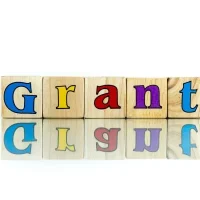In the world of non-profit organizations, securing funding is often a critical component of achieving mission-driven goals. However, the process of obtaining financial support is rarely straightforward. After submitting a grant proposal or a funding request, many NGO professionals find themselves in a state of uncertainty, wondering about the next steps.
One of the most crucial yet often overlooked aspects of this process is the follow-up with potential funders. Following up is not merely a courtesy; it is an essential strategy that can significantly enhance your chances of securing funding. Effective follow-up demonstrates professionalism and commitment, reinforcing the importance of your cause to potential funders.
It provides an opportunity to build relationships, clarify any questions, and keep your organization at the forefront of their minds. In this article, we will explore actionable tips and strategies for following up with potential funders, ensuring that your efforts yield fruitful results.
Timing and Frequency of Follow-Up
Timing is everything when it comes to following up with potential funders. A well-timed follow-up can make a lasting impression, while a poorly timed one can lead to frustration or annoyance. Generally, it is advisable to wait about one to two weeks after submitting your proposal before reaching out.
This allows funders sufficient time to review your submission without feeling rushed. However, if the funder has provided a specific timeline for their decision-making process, it is essential to respect that timeframe. Once you initiate your follow-up, consider establishing a regular cadence for future communications.
A good rule of thumb is to follow up every four to six weeks, depending on the nature of your relationship with the funder and their responsiveness. This frequency keeps your organization on their radar without overwhelming them with constant communication. Remember, the goal is to maintain a balance between being persistent and respectful of their time.
Personalized Communication
When following up with potential funders, personalization is key. A generic email or message can easily be overlooked or dismissed as spam. Instead, take the time to craft a tailored communication that reflects your understanding of the funder’s interests and priorities.
Begin by referencing any previous conversations or interactions you may have had, as this establishes a connection and shows that you value their time. Incorporating specific details about the funder’s mission or recent initiatives can also enhance your message’s relevance. For instance, if you know that a funder recently supported a project similar to yours, mention this in your follow-up.
Highlighting shared values and goals can create a sense of alignment and increase the likelihood of a positive response. Personalization not only demonstrates your commitment but also fosters a sense of partnership between your organization and the funder.
Providing Updates and Progress Reports
One effective way to engage potential funders during follow-up communications is by providing updates and progress reports on your organization’s activities. Even if they have not yet committed funding, sharing recent accomplishments or milestones can pique their interest and showcase your organization’s impact. For example, if you recently launched a new program or achieved significant outcomes in your community, be sure to highlight these successes in your follow-up message.
Additionally, consider including data or testimonials that illustrate the effectiveness of your work. Funders are often looking for evidence that their investment will yield tangible results, so providing concrete examples can strengthen your case. By keeping potential funders informed about your organization’s progress, you not only demonstrate transparency but also reinforce the value of their potential support.
Offering Additional Information and Materials
In some cases, potential funders may require more information before making a decision on your proposal. During your follow-up, be proactive in offering additional materials that could aid their evaluation process. This could include detailed budgets, project timelines, or case studies that provide further context for your request.
By anticipating their needs and providing relevant information upfront, you position yourself as a resourceful partner rather than just a grant seeker. Moreover, consider creating a digital portfolio or an online resource hub where funders can easily access information about your organization and its initiatives. This could include videos, infographics, or downloadable reports that showcase your work in an engaging manner.
By making it easy for potential funders to learn more about your organization, you increase the likelihood of them considering your proposal favorably.
Scheduling a Follow-Up Meeting or Call
While emails and written communication are essential for follow-ups, scheduling a meeting or phone call can take your engagement to the next level. A personal conversation allows for deeper discussions and provides an opportunity to address any questions or concerns directly. When proposing a meeting, be flexible with timing and offer multiple options to accommodate the funder’s schedule.
During the meeting, come prepared with an agenda that outlines key points you wish to discuss. This could include updates on your organization’s progress, specific aspects of your proposal that you would like to highlight, or any feedback you may have received from other funders. Engaging in a dialogue not only strengthens your relationship but also allows you to gauge the funder’s interest and address any hesitations they may have.
Expressing Gratitude and Appreciation
Gratitude goes a long way in building lasting relationships with potential funders. Regardless of whether they decide to support your organization or not, expressing appreciation for their time and consideration is essential. A simple thank-you note or email can leave a positive impression and keep the lines of communication open for future opportunities.
In addition to thanking them for their consideration of your proposal, acknowledge any specific insights or feedback they may have provided during previous interactions. This shows that you value their input and are genuinely interested in fostering a collaborative relationship. By cultivating an atmosphere of gratitude and respect, you enhance the likelihood of future engagement and support from potential funders.
Following Up After Receiving a Response
Once you receive a response from a potential funder—whether it’s positive or negative—your follow-up should continue with purpose and professionalism. If they express interest in funding your project, promptly acknowledge their response and express enthusiasm about the opportunity to collaborate further. Use this moment to clarify any next steps and ensure that both parties are aligned on expectations moving forward.
Conversely, if the response is unfavorable, it’s still important to maintain a positive relationship. Thank them for their consideration and ask if they would be willing to provide feedback on your proposal. Understanding their perspective can offer valuable insights for future submissions and demonstrate your commitment to continuous improvement.
By handling both positive and negative responses gracefully, you position yourself as a professional partner who values constructive dialogue. In conclusion, following up with potential funders is an integral part of the fundraising process for NGOs. By implementing thoughtful strategies around timing, personalization, updates, additional information sharing, meetings, gratitude, and post-response engagement, you can significantly enhance your chances of securing funding while building meaningful relationships with funders.
Remember that every interaction is an opportunity to showcase your organization’s mission and impact—make each one count!









































